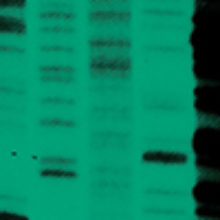Repurposing public health systems to decode COVID-19
07 July 2020

Existing public health monitoring systems in the UK, could improve understanding of the risk factors associated with severe COVID-19.
Research published in the journal Microbial Genomics describes how national surveillance systems can be linked with the UK Biobank. This pooled data could then be used to understand how genetics and other epidemiological factors impact risk of developing severe infection.
The UK Biobank (UKB) is an international health resource which enables researchers to understand the genetic and lifestyle determinants of common diseases. The researchers linked UKB with Public Health England's Second-Generation Surveillance System (SGSS), a centralised microbiology database used for national disease surveillance in England. SGSS holds data collected in clinical diagnostic laboratories in England, including test results for SARS-CoV-2.
Large cohorts such as UKB are a useful resource for understanding how a disease behaves in different groups, according to Dr Danny Wilson, Associate Professor at the Big Data Institute, University of Oxford (UK). He said: “Large datasets are helpful for detecting risk factors, including those that have modest effects or vary from person-to-person, and for providing a sound footing for conclusions by reducing statistical noise. These discoveries help scientists better understand the disease and could inspire efforts aimed at improving treatment.”
By linking the two systems, researchers hope to facilitate research into the risk factors for severe COVID-19. Repurposing public health systems in this way can provide near-to-real-time data on SARS-CoV-2, and allow researchers to understand the spread, testing and disease characteristics of the virus.
This new computerised system will provide weekly linkage of test results to UKB and other cohorts. The UK Biobank database consists of around 500,000 men and women in the UK, aged 50+. This group is particularly appropriate for the study of COVID-19, as severity of disease increases with age. Further data is also being released by UKB, according to Dr Wilson: “UK Biobank are releasing, or have released other data relevant to COVID-19, like mortality records, and they plan to release hospital episode statistics and primary care data soon too”.
Their data provides in-depth analysis of disease severity, symptoms and risk in people from the UKB database. Researchers hope that this data can reveal additional risk factors for severe infection and improve understanding of the disease. “By providing information about COVID-19 to large cohorts including UK Biobank, INTERVAL, COMPARE, Genes & Health, Genomics England and the National Institute for Health Research (NIHR) Biorepository, this work facilitates research into lifestyle, medical and genetic risk factors” said Dr Wilson.
Notes to Editors:
Peer reviewed Observational study People
The full scientific article can be found on the Microbial Genomics website (doi: 10.1099/mgen.0.000397)
Published by the Microbiology Society, Microbial Genomics is a Gold Open Access, peer-reviewed journal publishing cutting-edge, pioneering research into genomic approaches to microbiology.
The Microbiology Society is a membership charity for scientists interested in microbes, their effects and their practical uses. It is one of the largest microbiology societies in Europe with a worldwide membership based in universities, industry, hospitals, research institutes and schools.
Our principle goal is to develop, expand and strengthen the networks available to our members so that they can generate new knowledge about microbes and ensure that it is shared with other communities. The impacts from this will drive us towards a world in which the science of microbiology provides maximum benefit to society.
For more information, please contact: [email protected]
This Press Release has been labelled in-line with The Academy of Medical Sciences’ recommendations. For more information and the full definition of these labels, please visit their website.
